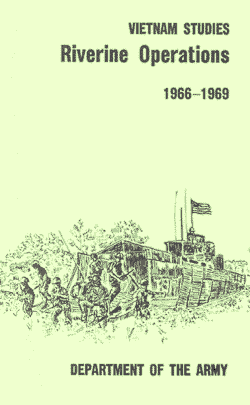1966-1969

Washington, D.C. 20402
|
|
|
|
| 1 River Assault Squadron Organization | 61 |
| 2 Mobile Riverine Force Command Structure | 88 |
| 1 Viet Minh River Ambushes, 5 January-16 February 1954 | 15 |
| 2 SEA LORDS Operations, November 1968-January 1969 | 172 |
| 3 US River Craft Transferred to Vietnam Navy in June 1969 | 178 |
- Page created 29 May 2001